Orb Weaver Spider Facts

Orb Weaver Spiders are famous for their orb-shaped webs. That’s where their name comes from. There are more than 3000 species of this kind of spider. Garden spiders (subfamily Argiopinae) are particularly notable. They are seen in grassy places and are brilliantly colored—yellow and black or red and black. Let’s look at some interesting facts about this fascinating critter.
What does an Orb Spider look like?
Orb weavers come in a variety of colors and have hairy or spiky legs. Humped Orb Weavers, also known as Silver Orb Weavers, have a silvery body with yellow or green and black markings. They have a relatively large abdomen. The rounded ‘shoulder’ humps on the stomach give these spiders their famous name.
Orb Weaver Spider Size
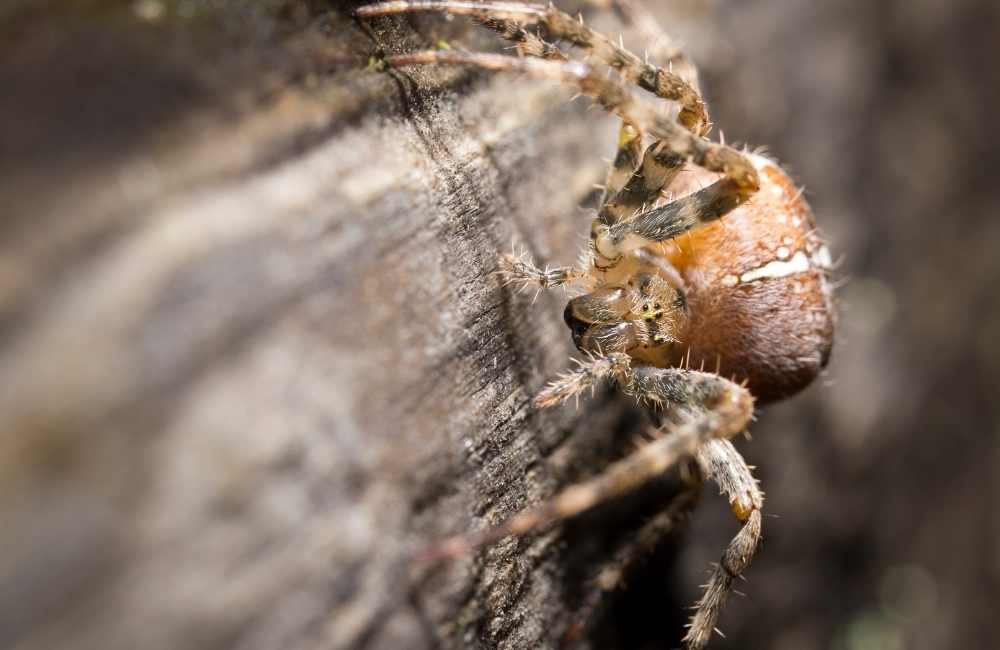
They have long bodies and long arms. The length of their body is usually around 1 cm. One of the more common variants is the Garden Orb Weaver spider. The female Garden Orb Weaver is 2 to 3 centimeters long, while the male is 1.5 to 2 centimeters long. The bigger individuals can have a diameter of up to five inches (approximately 12 centimeters).
What family do they belong to?
Orb-weaver spiders belong to the Araneidae spider family. The Orb-weaver spider family, Araneidae, is one of the most diverse spider families in size and appearance. There are over 3000 species across more than 170 genera of these spiders. Each species has its name, so the classification used for this type of spider is its family.
Where do you find Orb Weaver Spiders?
In terms of geography, these spiders are found all over the world. They may have preferences about their surroundings, but they are a global species. Except for a few isolated islands, they dwell on practically every landmass on the planet. One place where they’re not found is in Antarctica.
Typical Habitat
Dry open forest and woodlands, coastal dune shrubland, and mangrove ecosystems are all home to Orb Weaving Spiders. Within the family, the different species are found in other parts of the world. For example, the Golden Orb Weaving Spider lives most commonly in Australia.
What do Orb Weavers Eat?
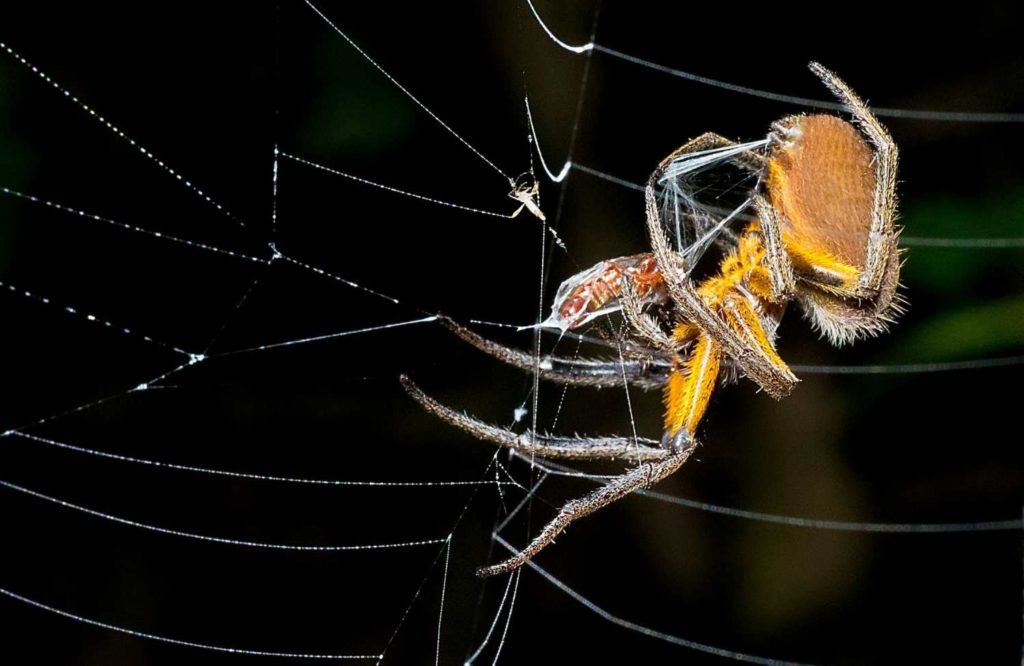
Are you wondering what these amazing Orb Weavers eat? Orb Weavers are carnivorous. Flies, moths, beetles, wasps, and mosquitoes make up the spider’s diet. Sometimes, more enormous spiders can also trap frogs and hummingbirds if they come close enough.
Types of Orb Weavers
As we mentioned before, Orb Weavers are part of a large family. There are so many different kinds of spiders in this family. Let’s talk about some of the most common and interesting species:
- Golden Orb Spider:
This spider belongs to the Nephila genus of the larger Orb Weaver spider family. Female golden orb-weavers grow to be 4.8–5.1 cm (1.5–2 in) long. Males are two-thirds smaller (less than 2.5 cm, 1 in) than females. They have a golden-ish appearance, hence the name. Golden orb-weavers can be found all over the world in warmer climates. You can find them in Australia, Asia, Africa, and warm parts of the Americas. Their silk has a golden gloss to it. - Red Orb Spider:
These spiders are distinguished from others by their intricate webs and red color. This particular species likes to build its webs in grass and weeds growing out of water. It is also known as the red-legged Nephilim.
- Brown Orb Spider:
Brown widows and orb-weavers are both poisonous. The bite of an orb-weaver spider is not harmful to humans and causes effects comparable to a bee sting. The Brown Orb Weaver is differentiated by its color. It is more common in urban areas and also in forests or green areas.
- White Orb Spider:
The White Orb Spider is obviously whiteish in color. On the top of their abdomen, they have a roughly leaf-shaped design with a complicated outline that is darker than the surrounding area. Several pale dots or one or more stripes may also be present.
- Spotted Orb Weaver:
The scientific name for this species of spider is Neoscona crucifera. They normally lurk in a curled leaf towards the border of their web during the day. Individuals vary in color, with some seeming tan, others orange/red, and yet others appearing yellowish-brown.
How do Orb Weaver Spiders Reproduce?
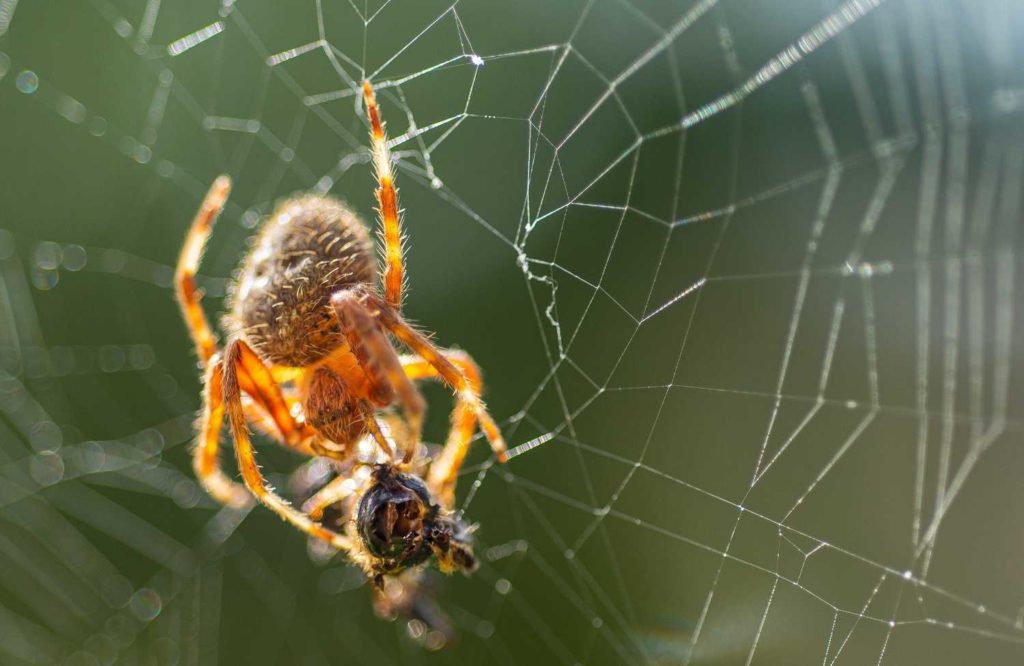
This group’s females grow to be substantially more prominent than the males. In most cases, the male seeks out the female in her web and avoids becoming prey. Many species prey on smaller or slower males and do not allow them to reproduce. Each species has its unique way of laying eggs. It’s not unusual for them to be the female’s first meal after they’ve mated. Female orb weavers create one or more egg sacs. Each of these sacs can contain hundreds of eggs.
Predators of Orb Weaver Spiders
A variety of bird species prey on the Orb Weaver. Wasps from the Sphecidae family are also predators. The wasps descend on the web and imitate a struggling bug’s vibrations to attract the spider to the perimeter. Then, they take the spider away and paralyze it. The immobile spider will be stored as live food for their larvae.
Behavior and Characteristics
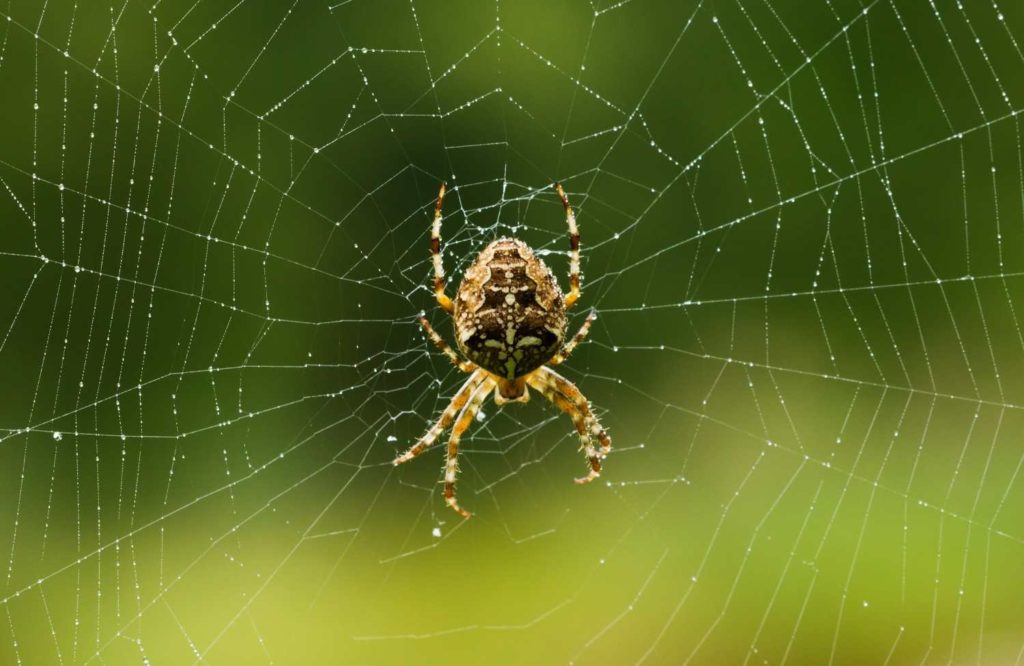
Much of this spider’s action is focused on web construction. While waiting for prey to fly into the sticky strands, it stands still in its web. After trapping something delicious, the spider bites it to sedate it. Then, it wraps the prey in silk. Many such spiders devour their webs every day and quickly rebuild new ones.
Nocturnal Workers
Orb weavers are nocturnal spiders that feed at night. Many species work on their webs at night, either building or repairing them. Some Orb Weaver spiders rip down and even swallow much of the web’s silk as the morning dawns. This fascinating habit is used to absorb moisture from the dew that has accumulated on the web. They also do this to keep giant creatures like birds from becoming entangled in the web.
Waiting and Watching for Prey
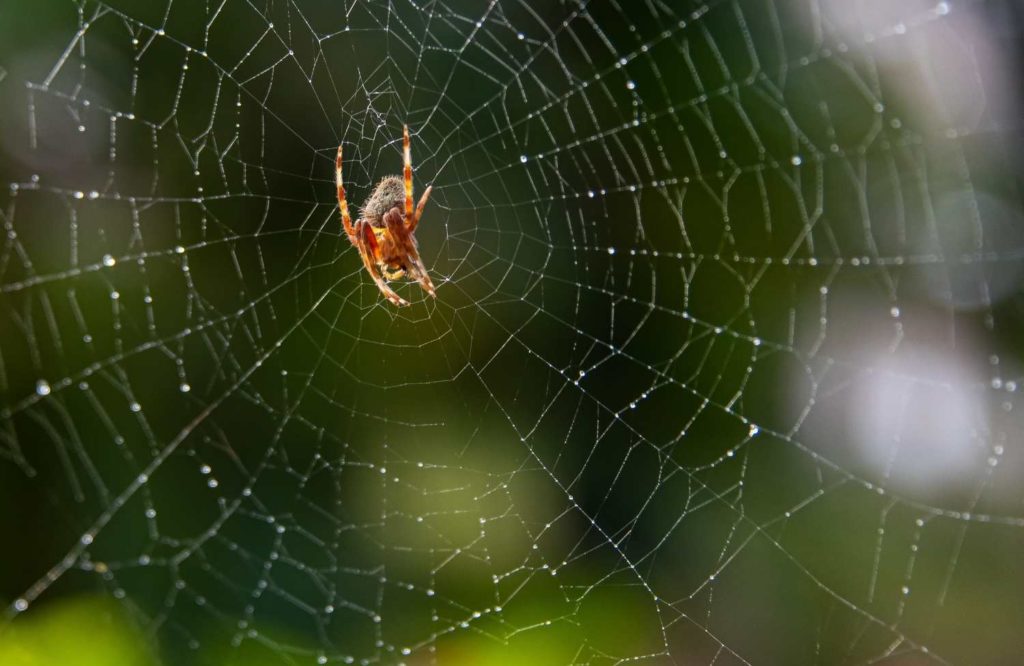
Orb weavers are not hunters or wanderers. They will either sit in their web or walk away from it and wait for prey to become tangled in it. If the spider leaves the web, it will hide safely, such as wrapped up leaves or a plant limb. On the other hand, the spider is aware of prey that may become trapped in the web thanks to a silk trap line that vibrates and alerts the spider if something enters the web.
When a prey bug gets caught in the web, the trap line vibrates, signaling the spider to rush to the web, bite and paralyze the victim, then wrap it in silk for later feeding. If the spider catches something that isn’t edible, it will either ignore it or remove it from the web and return to its safe hiding place.
Orb Weaver Spider Web
This spider secretes strands from special glands. They squirt thick fibers for the web’s frame and threads inside it. These threads are called ‘Radial Threads’. Like the spokes on a bicycle wheel, they radiate from a central point. They use the non-sticky silk for “frame threads,” which rim the web like a bicycle wheel, holding the radial threads in place and attaching the web to supports like plant stems. “Spiral threads” are made out of sticky silk arranged in a spiral pattern radiating from the web’s center.
How do they use the Web to catch and feed on Prey?
The sticky silk is what catches the spider’s prey. They also secrete tough threads for tying up or trapping their prey and special silk to encase the egg sac. Tiny droplets of glue are embedded in the fine sticky filaments. These will stick to anything they come into contact with.
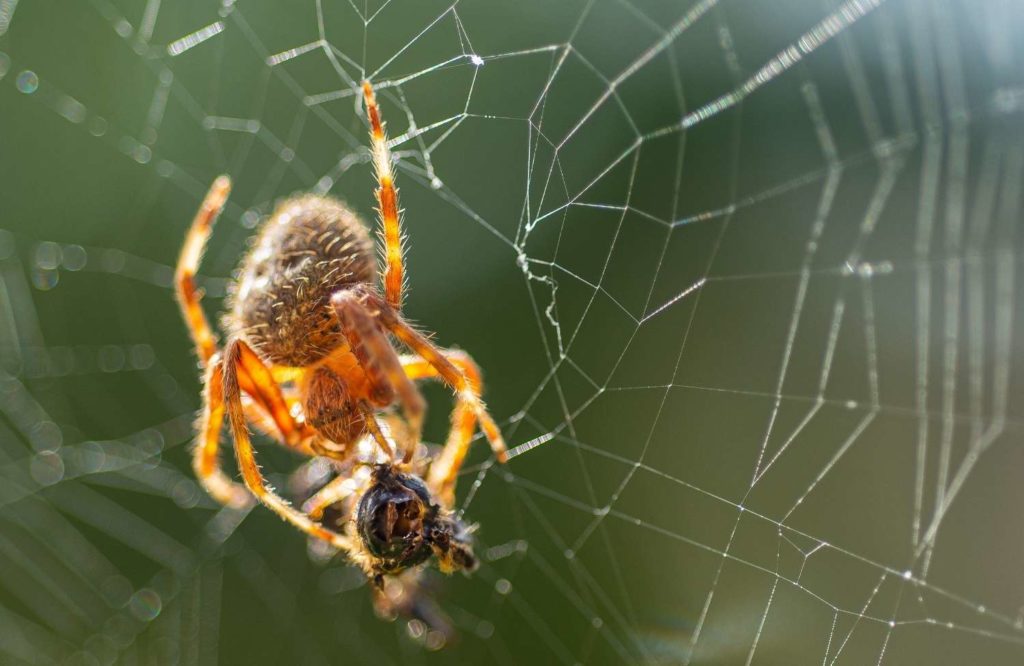
Much more than glue is in these globules. There can also be some toxins in it. Some of the toxins in the web droplets were like neurotoxins that can disrupt insect neurological systems. That’s how they catch their prey.
Orb Weaver Spider Bite
These spiders are not aggressive. They only bite when threatened and are unable to flee. The bite of an orb weaver is said to be similar to a bee sting. The bite has no long-term consequences. Unless their web is formed in a heavily trafficked area, they are entirely harmless.
At the most, you might face some irritation or reaction if you’re allergic to them.
Amazing Facts About Orb Weaver Spiders
- How long do Orb Weaver Spiders live?
An Orb Weaver spider lives for about 12 months. - What do orb weavers eat?
They eat all kinds of small insects. Some bigger species can eat frogs and small birds too. - There are more than 3000 types of Orb Weaver spiders all over the world.
